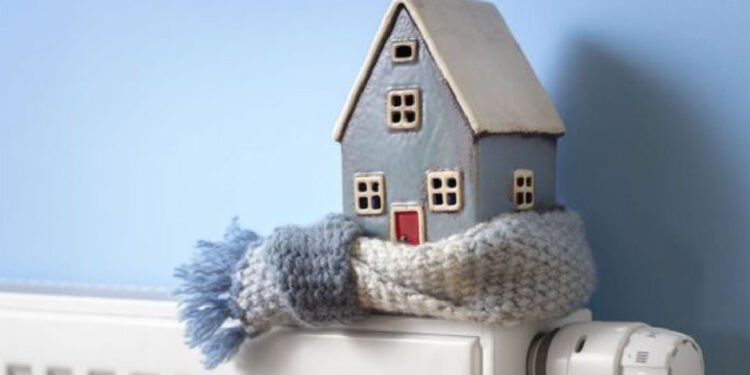When winter’s chill sets in, keeping your home warm without breaking the bank becomes a top priority. I’ve found that reducing heat loss doesn’t have to mean expensive renovations or high utility bills. With a few smart, budget-friendly tweaks, you can keep the warmth inside and the cold at bay. For example, you can learn more about using reflective insulation as an affordable way to enhance your home’s efficiency.
From sealing drafts to using thermal curtains, there are plenty of effective strategies that won’t drain your wallet. In this article, I’ll share some simple yet powerful tips to help you minimize heat loss and maximize comfort in your home. Let’s dive into these cost-effective solutions to stay cozy all winter long.
Improve Insulation
Boost home warmth on a budget by enhancing insulation. Proper insulation helps keep the cold out and the warmth in.
Types of Insulation
Various insulation types cater to different needs. Fiberglass is widely used and affordable. It comes in rolls and batts, fitting snugly between wall studs and ceiling joists. Foam board insulation offers higher R-values, making it suitable for areas needing strong thermal resistance, like basements and uncovered walls. Spray foam insulation, while more expensive, provides excellent coverage in hard-to-reach areas. Cellulose insulation, made from recycled paper products, offers an eco-friendly option. Mineral wool insulation is fire-resistant, making it a choice for enhancing safety. Different types serve different purposes, so choosing the right one maximizes effectiveness and cost-efficiency.
DIY vs. Professional Installation
Both DIY and professional installation have merits. DIY insulation saves labor costs and gives control over the process. Homeowners can easily install fiberglass rolls, foam boards, and loose-fill insulation. Resources like online tutorials and local workshops can assist in mastering the techniques. However, installation errors might lead to inefficiencies. Professional installation ensures expert application, especially for complex options like spray foam. Although initial costs are higher, long-term savings accrue from optimal performance. I typically balance budget and complexity when deciding, often combining DIY efforts for straightforward tasks and hiring pros for intricate ones.
Seal Air Leaks
Sealing air leaks is an efficient and budget-friendly way to minimize heat loss in homes. Addressing common areas like doors, windows, chimneys, vents, floors, and basements can greatly improve your home’s thermal efficiency.
Doors and Windows
Gaps around doors and windows are common sources of heat loss. I recommend using weatherstripping and caulk to seal these gaps. Adhesive-backed foam or rubber weatherstripping is suitable for doors. For windows, caulking around the frames and adding a window film can reduce drafts. Checking for worn-out seals and replacing them ensures maximum protection against cold air entrance. Utilizing draft stoppers at the base of doors offers additional cost-effective insulation. Regularly inspecting and maintaining these areas sustains the effectiveness of your seals over time.
Chimneys and Vents
Chimneys and vents are often overlooked but significant sources of heat loss. A chimney balloon can block cold air from entering your home through the chimney when not in use. Closing the damper when the fireplace is off is another simple measure. For vents, especially exhaust fans, inspecting and sealing edges with caulk or foam improves insulation. I find that vent covers or flaps that close when not in use help retain indoor heat. Regular checks for proper operation and sealing maintain their effectiveness and decrease energy costs.
Floors and Basements
Floors and basements can be major contributors to heat loss due to their proximity to cold ground surfaces. Sealing gaps along the edges of floors with caulk can prevent drafts. For basements, insulating pipes and sealing cracks in the walls and floor with foam or caulk are effective strategies. I suggest using rugs or carpets on floors to add an extra layer of insulation. Insulating basement ceilings and walls prevents cold air from seeping into the living spaces above. Regularly checking for and addressing air leaks in these areas ensures sustained energy savings.
Utilize Window Treatments
Homeowners can manage heat loss effectively with the right window treatments. These affordable options enhance insulation and maintain indoor warmth.
Heavy Curtains
Heavy curtains block drafts and retain indoor heat. During winter months, thick fabrics like velvet or thermal-lined options create a barrier against cold air. For optimal efficiency, ensure curtains cover windows completely and extend past the window frame. Drawing curtains at dusk traps existing warmth, reducing reliance on heating systems. In contrast, opening them during sunny days captures residual solar heat. Some heavy curtains use interlining for extra insulation, adding layers without compromising style. These curtains not only act as a thermal shield but also enhance room aesthetics, offering a dual benefit. Investing in high-quality curtain rods ensures durability and proper placement, further sealing off window areas.
Window Foil
Window foil, also called reflective foil, enhances insulation by reflecting heat back into the room. This low-cost solution is simple to install on the inside of window glass. Attach foil using adhesive strips or tape to cover the entire window surface. It’s notably effective on single-pane windows which are less energy efficient. By reflecting up to 90% of heat, foil reduces heat loss significantly. Ensure the foil is smooth and wrinkle-free for maximum efficiency. For double-pane windows, foil provides an additional barrier, complementing their insulating properties. Although it may slightly reduce natural light, the thermal benefits outweigh this drawback during colder months. Regularly inspect the foil placement and reapply if necessary to maintain full effectiveness across the season.
Optimize HVAC System
Managing your HVAC system efficiently plays a crucial role in reducing heat loss. Implementing a few strategic steps can maximize its performance without substantial costs.
Regular Maintenance
Regular HVAC maintenance ensures optimal efficiency. I replace air filters every 90 days when usage is average, or monthly during heavy use periods. Clean filters improve airflow and reduce strain on the HVAC system. Annually servicing the unit, checking refrigerant levels, and cleaning coils enhances heating effectiveness and extends the system’s lifespan.
Keeping vents unobstructed boosts performance. I keep furniture and other objects away from vents to allow free airflow. Additionally, inspecting ductwork for leaks and sealing them with mastic sealant or metal tape prevents heat loss. Regular maintenance checks create a more efficient HVAC system, thereby reducing home heating costs significantly.
Use of Programmable Thermostats
Programmable thermostats offer precision in temperature control. By setting a lower temperature when the house is empty or during sleep, and a higher one when activity is high, I optimize heating needs. According to the U.S. Department of Energy, lowering your thermostat 7°-10°F for 8 hours daily can save up to 10% on heating costs annually.
Investing in a programmable thermostat costs less than $50 but allows savings in the long run. I choose models with Wi-Fi capability for remote access via smartphone, which provides flexibility in adjusting settings from anywhere. This feature is especially useful for erratic schedules, ensuring comfort while maximizing energy savings.
Improve Radiator Efficiency
Enhancing radiator efficiency can significantly reduce heat loss and lower energy bills. Simple, cost-effective techniques maximize radiator heat output.
Bleed Radiators
Air trapped in radiators reduces heating efficiency. Bleeding radiators removes this air, allowing hot water to circulate freely. First, turn off the heating system. Use a radiator key to open the bleed valve, keeping a cloth handy to catch any water. A hissing sound indicates air escaping; close the valve once water starts to flow. Check each radiator annually before the heating season.
Use Radiator Shelves
Radiator shelves direct heat into the room instead of letting it rise to the ceiling. Install a shelf 4″ above the radiator using brackets. Ensure the shelf is as wide as the radiator for maximum efficiency. Shelves also provide added storage space, making them a functional and aesthetic addition. Opt for heat-resistant materials to prevent warping.
Add Reflective Panels
Reflective panels behind radiators minimize heat loss by reflecting heat back into the room. Install panels by cutting them to size and securing them with adhesive or mounting tape. Reflective panels are particularly effective for radiators on external walls, where heat loss is higher. Choose aluminum-based panels for the best results. Regularly check the panels for dust buildup to maintain efficiency.












